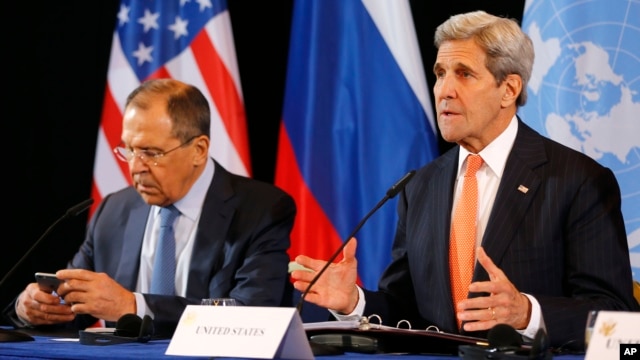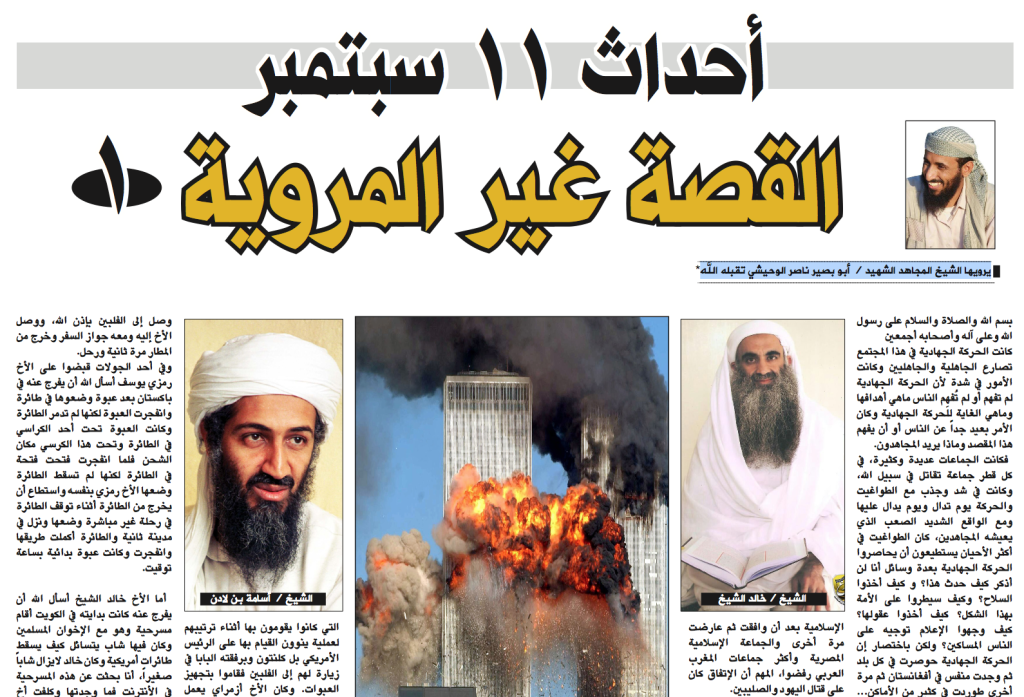Medina—The First Muslim Refugee Resettlement Program
Kilpatrick ~CrisisMagazine: With all the talk about the Syrian refugees, one point is often overlooked. Much of the debate focuses on the question of whether or not the refugees can be reliably vetted. If they can be certified as one hundred percent terrorist-free, then, presumably, the resettlement can safely proceed.
But even if every terrorist could be excluded from the ranks of the refugees, a problem would remain. Many analysts are concerned that the resettlement program might facilitate the growth of terrorist-tolerant communities in America. By “terrorist-tolerant” I don’t mean that its members are thinking every minute about what they can do to support jihad, but rather that they have come to take for granted things that aren’t assumed in other societies.
Terror, for instance. Nonie Darwish, a former Muslim who grew up in Egypt, puts it this way:
One of the reasons that the so-called moderate Muslims have become irrelevant … is that over the centuries they have become tolerant of Islamic terrorism and considered it as part of normal life.
“Life under Sharia itself is a life under terror,” observes Darwish. And that daily low-level terrorism accustoms Muslims to view it as something “like a natural disaster or part of life that must be tolerated.”
So, although a Syrian refugee may have no personal taste for terror, he can be surprisingly tolerant of it. A 2007 public opinion poll of Syrians revealed that 75 percent of those polled supported financial aid for Hamas, Islamic Jihad, Hezbollah, and “Iraqi fighters” (at that time, mostly al-Qaeda). Need it be mentioned that all these groups are designated as terrorist organizations by the U.S. government? A more recent poll of 1,365 Syrians found that one out of five considered ISIS to be a positive influence on the country. And living in the West doesn’t seem to change these attitudes. A 2014 opinion poll showed that 27 percent of the French population in the 18-24-year-old demographic supported ISIS. Assuming a random sample, and assuming that the majority of pro-ISIS respondents were Muslim, that would mean that the vast majority of young French Muslims support ISIS.
That kind of supportive environment is a factor that’s often overlooked in the debate over Syrian refugees. As defenders of the resettlement program like to point out, terrorists can get into the U.S. by other means than by mingling with refugees. But once here, they need a network to support them and give them cover. And the network itself can only function if the larger community is willing to look the other way.
Europe is now dotted with such networks—in the Paris suburbs, in the Brussels borough of Molenbeek, in the Neukölln district of Berlin, and in numerous other places. There is evidence that similar networks already exist in nascent form in the U.S. Beyond the question of whether terrorists will mix in with refugees lies a larger question about the refugee resettlement program. Will it contribute to a strengthening of our society, or will it lead instead to the strengthening and expansion of terror-supportive networks?
Whether or not a particular group of refugees has been infiltrated by ISIS, there remains the fact that many refugees subscribe to the same general worldview held by members of the Islamic State. After all, they’ve been steeped in the same cultural-religious milieu that produced the terrorists. Many of them will take it for granted that Islam is the supreme religion, that Muhammad was the perfect man, and that Jews and Christians are unclean. They may be averse to committing violence, but they may find it perfectly understandable if other Muslims resort to violence in order to avenge a real or perceived insult to Islam. Although that mindset is alien to us, it shouldn’t be incomprehensible. At the time that a death fatwa was issued against the author Salman Rushdie, I remember talking with several Catholics who felt quite sympathetic to the Ayatollah Khomeini (who issued the fatwa), and rather unsympathetic to Rushdie and his “blasphemous” attitude toward religion.
Given their cultural background, it’s reasonable to expect that Sunni Muslim refugees will bring with them a set of beliefs and attitudes conducive to the incubation of terrorism. Even if there were a foolproof method for excluding active terrorists from their midst, there is no way of vetting for future terrorists—young Muslims who at some point in their development decide that ISIS or some similar movement is the logical conclusion of all they have been taught.
This “conversion” to radical Islam can come quite suddenly. Mohamed Abdelslam, the brother of two of the Paris terrorists, told reporters that his brothers began to change roughly six months before the attack, when they, “stopped drinking and started praying.” Likewise, the radicalization of Mohammod Youssuf Abdulazeez, the Chattanooga jihadist who killed five servicemen, could not easily have been forecast. To his classmates and teachers, he seemed like a normal American boy, and if he had problems, they were of the normal young American male variety—pot-smoking, heavy drinking, and fast driving. Unlike other young Americans, however, he would have been exposed—either at home or on Islamist websites—to the belief that one can wipe out one’s sins by an act of martyrdom.
This “sudden conversion syndrome” to more radical forms of Islam is increasingly common among Muslim youth. But, as I said, it’s not easy to predict. If you’re a government official whose job it is to vet refugees, how can you know if the smiling fourteen-year-old boy standing in front of you and surrounded by his polite and pleasant family is going to go radical three years down the line?
Absent other information and unfair as it may seem, his family’s culture has to be taken into account. To some extent, we are all creatures of our culture, and Islamic cultures seem to produce a disproportionate number of terrorists. Contemporary Western culture, on the other hand, seems to produce a disproportionate number of naïve egocentrics who are incapable of imagining that other cultures may be radically different from their own. Their tendency is to automatically project their own values and attitudes on to all they see.
But, as should now be clear to anyone willing to look, Islamic culture is not simply a colorful variation of our own. In those places where traditional Islam is the governing principle—whether in the Islamic State, or in parts of Pakistan, Indonesia, or Nigeria—the same disdain for non-Muslims and their religions can be found. This attitude is common not just among terrorists, but also among ordinary Muslims. By all accounts, the fifteen Muslim migrants who threw twelve Christians overboard during a Mediterranean crossing were not terrorists, they were simply Muslims who took offense when some of the Christians began to pray. Some of the Muslims who attacked Christians in European refugee camps appear to have been members of ISIS, but others were not. Blind to the differences in culture, European officials initially put Christian and Muslim migrants together in the same camps. With a bit more cultural awareness under their belts, they came to the politically incorrect conclusion that the two groups had to be housed separately. A less violent example of Islamic contempt for other cultures was provided by the Turkish soccer fans who booed and chanted when, during a Turkish-Greek soccer match, a moment of silence was requested for the victims of the Paris massacre.
As concerns the Syrian refugee crisis, Christians are regularly reminded that the Holy Family were once refugees in Egypt. Yes, but the culture brought into the world by the Holy Family is worlds apart from the one introduced six centuries later by Muhammad.
Let’s not forget that the Holy Family were once refugees. But in regard to the present crisis there’s another and perhaps more appropriate analogy to consider: Muhammad and his followers were also once refugees. He and his group of about 100 men, women, and children had long overstayed their welcome in Mecca. According to Muslim chroniclers, they had to flee in order to avoid persecution. Fortunately for Muhammad, the more “enlightened” citizens of Medina extended an invitation to the Muslims to come and live in their city. It is not recorded whether or not they held up large “welcome refugees” banners as is now the custom at European train stations, but they soon enough experienced the kind of regrets that Europeans are now having. Muhammad gradually acquired wealth and converts, and within a half-dozen years he was the master of Medina. Those Medinans who were not exiled or slaughtered were thoroughly subjugated. Muhammad then used Medina as the launching pad for his conquest of all Arabia. Within a century of his death, his followers had conquered nearly half of the civilized world.
The relevant analogy for our society is not the flight to Egypt, but the flight to Medina and the subsequent colonization of that city by the Muslims. A similar process of cultural conquest by migration is now underway in Europe. Citizens of the United States would be well-advised to monitor the situation over there before embarking on their own ill-considered experiment in welcoming the stranger.






